In this article, we'll cover the key dos and don'ts that everyone should know to stay safe while working with ladders. Whether you're using it at industrial work or for your home. Implementing these safety measures will significantly lower the hazards associated with using ladders and demonstrate your commitment to maintaining personal well-being when engaging in elevated tasks.
Understanding Different Types of Ladders:
There are various types of ladders available, each designed for specific purposes. Understanding their features, common uses, and safety precautions is crucial to ensure your safety while working at heights.
Straight Ladder:
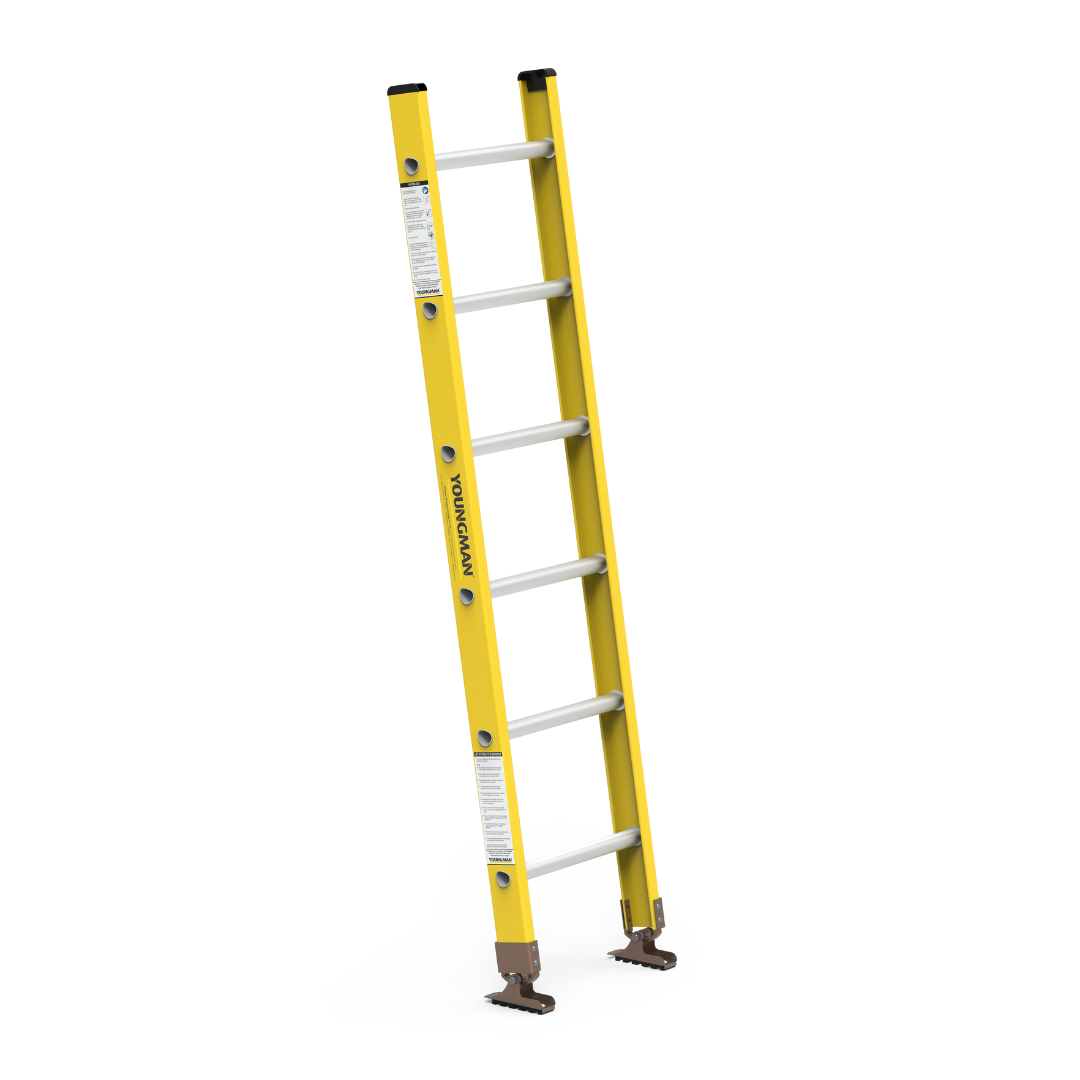
A straight ladder is the most basic and commonly used type of ladder. It consists of one long, straight section and is typically leaned against a surface for support. When using a straight ladder:
- Ensure the ladder is tall enough to reach your desired height without standing on the top rungs.
- Set the ladder at the correct angle, with the base placed one foot away from the surface for every four feet of ladder height.
- Use ladder stabilizers or secure the ladder to prevent it from slipping sideways.
Step Ladder:
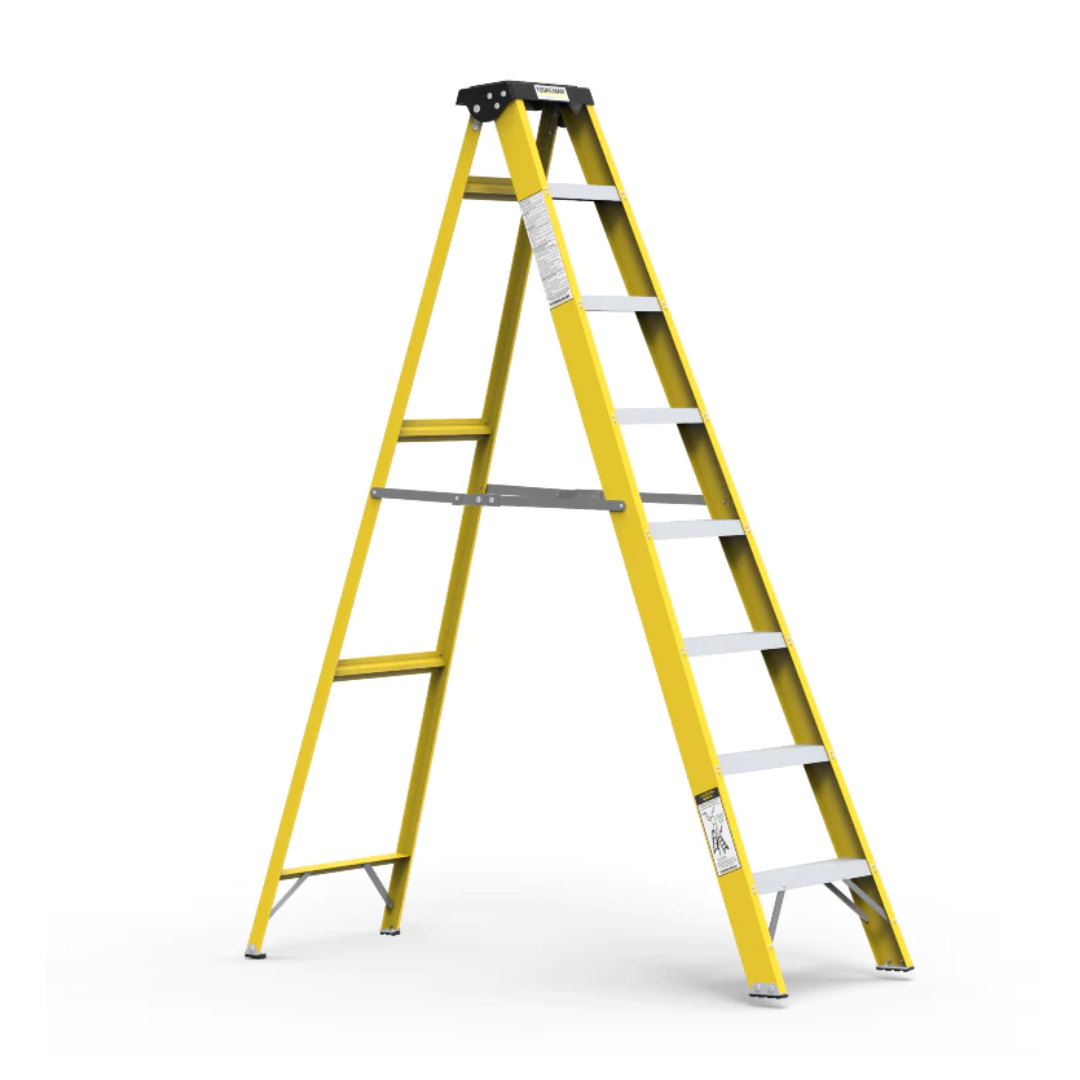
Step ladders are self-supporting and feature an A-type design. They are ideal for tasks that require a freestanding ladder. When using a step ladder:
- Fully open the ladder and engage the locking mechanism to ensure stability.
- Avoid standing on the top cap or the top two steps.
- Maintain three-point contact by always having two feet and one hand or two hands and one foot on the ladder.
Extension Ladder:
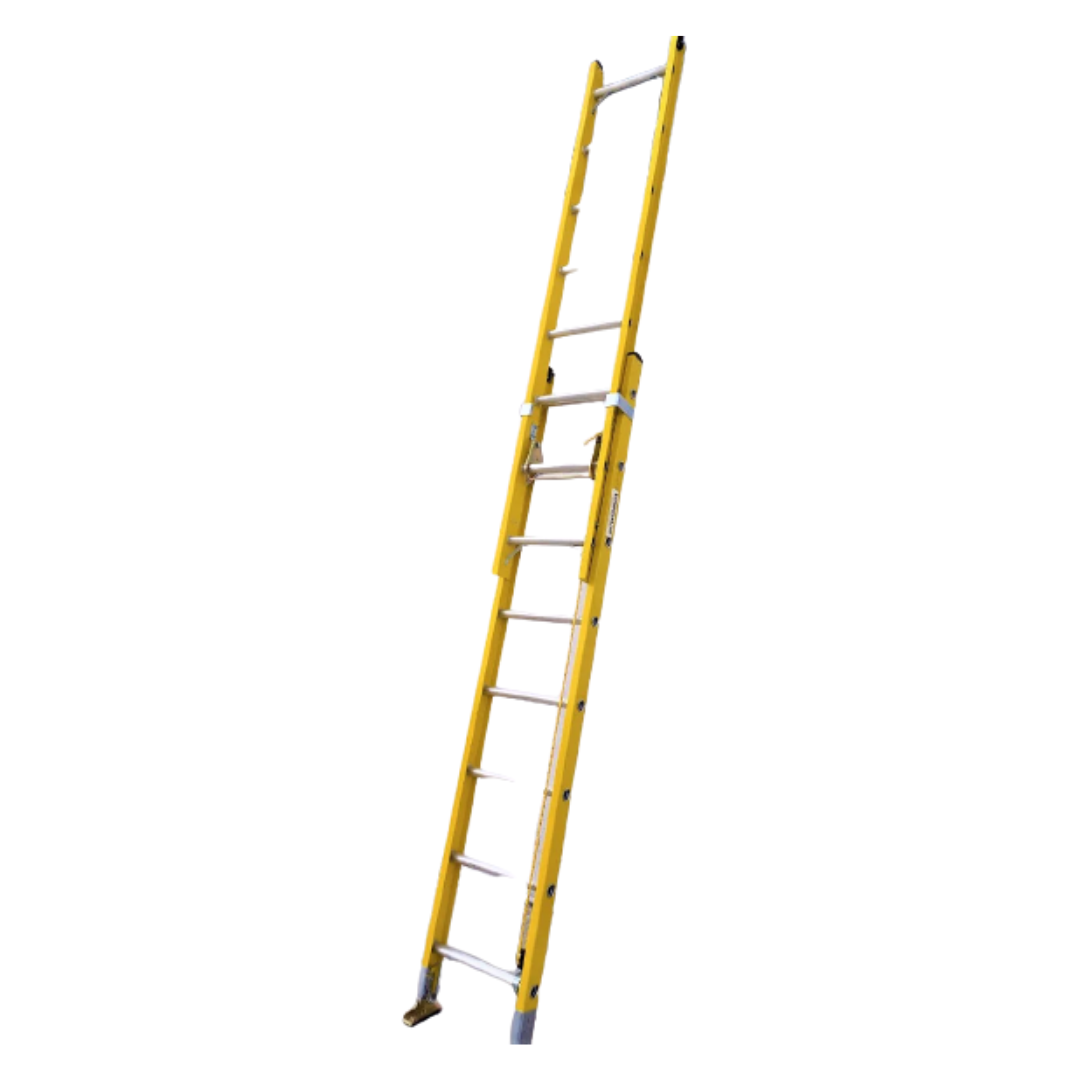
Extension ladders consist of two or more sections that can be extended to reach greater heights. They are commonly used for tasks like painting or accessing roofs. When using an extension ladder:
- Make sure the ladder is long enough to extend at least three feet above the supporting surface.
- Check that the extension locks are secure before climbing.
- Secure the ladder on stable ground at the top and bottom to prevent movement.
Platform Ladder:
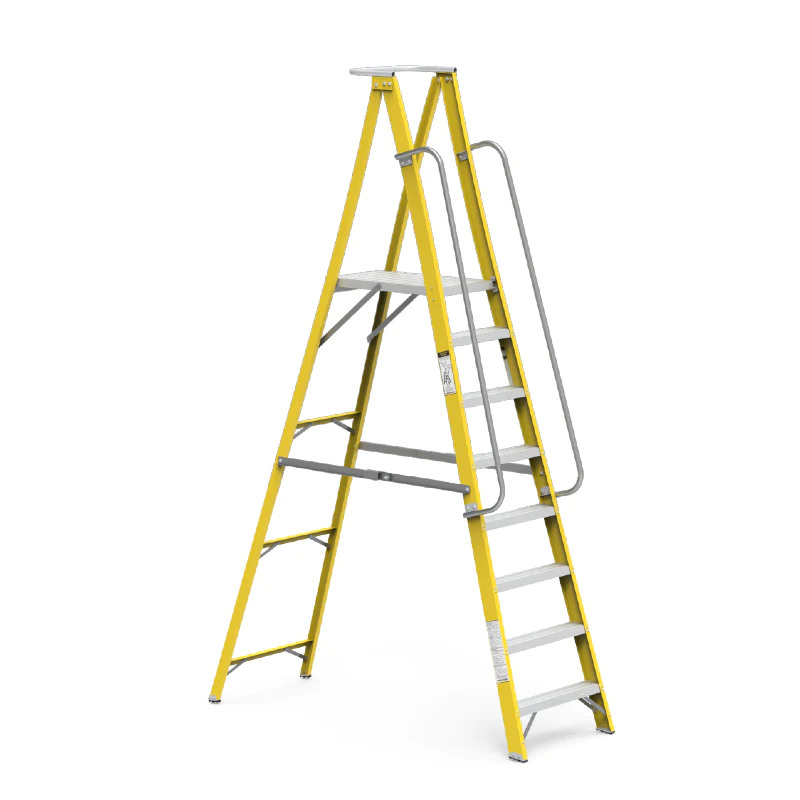
Platform ladders are designed to provide a stable and secure platform for working at elevated heights and offer greater safety and convenience compared to traditional ladders. Equipped with safety rails or guardrails and handrails, ensuring that you can maintain your balance and have a secure area to work from. When using a platform ladder:
- Avoid climbing higher than the recommended height or standing on the edge of the platform ladder
- Prior to using a platform ladder, it is crucial to conduct a comprehensive inspection to identify any potential cracks, loose bolts, or damaged steps
- Always check the ladder's weight capacity and ensure that it can support both your body weight and the weight of any tools or materials
To ensure your safety while using a ladder, it's important to follow these dos and don'ts:
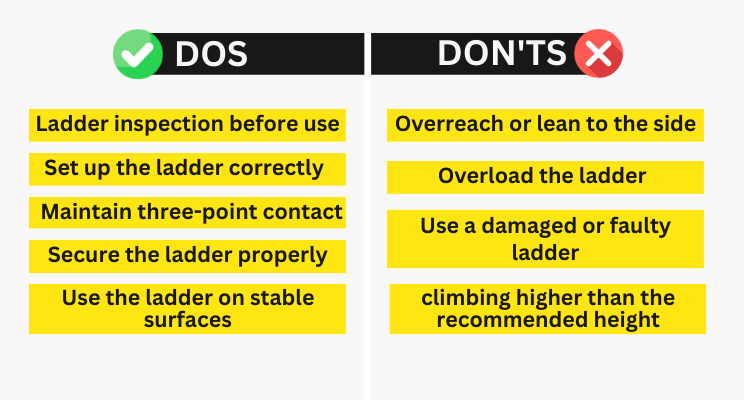
Dos
Ladder inspection before use:
- Check for any damage, such as cracks, bent parts, or loose rungs.
- Ensure all hinges, locks, and ropes are in good working condition.
- Remove any debris or slippery substances from the ladder.
Set up the ladder correctly:
- Choose a stable surface with no sloping or slippery areas.
- Secure the ladder base to prevent it from shifting or sliding.
- Utilize ladder levelers or ladder stabilizers if necessary. :
Maintain three-point contact:
- Always have two feet and one hand or two hands and one foot on the ladder.
- Avoid leaning too far to either side, overreaching, or stretching excessively.
Secure the ladder properly:
- Use ladder locks or hooks to secure the ladder to the supporting structure.
- Tie off the ladder if you're working at a significant height.
Use the ladder on stable surfaces:
- Avoid using ladders on uneven or soft ground.
- If necessary, use a stable board or mat to provide a solid base for the ladder.
Don'ts
Overreach or lean to the side:
- Overreaching can cause the ladder to become unstable or tip over.
- Always keep your center of gravity within the ladder's sides.
Overload the ladder:
- Check the ladder's weight capacity and never exceed it.
- Consider the weight of your tools and equipment as well.
Use a damaged or faulty ladder:
- A damaged ladder can collapse or fail during use.
- Replace or repair any ladder with visible defects or structural issues.
In addition to following the dos and don'ts, here are some best practices to enhance ladder safety:
Choosing the right ladder for the task:
- Consider the height, weight capacity, and specific features required for your project.
- Ensure the ladder is suitable for the environment, such as using a non-conductive FRP ladder near electrical sources.
Proper ladder positioning and angle:
- Position the ladder close to the work area to minimize reaching.
- For straight and extension ladders, follow the 4-to-1 rule for the angle:
- one foot away from the wall or surface for every four feet of ladder height.
Ensuring a secure footing:
- Clear the area around the ladder from debris, cords, or other potential hazards.
- Use slip-resistant ladder feet or a stabilizing device for added stability.
Climbing and descending safely:
- Face the ladder while climbing or descending.
- Maintain a firm grip on the ladder rungs, and avoid carrying tools or materials that may interfere with your balance.
Storing and maintaining ladders:
- Store ladders in a dry and secure location, away from extreme temperatures.
- Regular ladder inspection and maintenance, addressing any issues promptly.
Ladder safety is of utmost importance to protect yourself from accidents and injuries when working at heights. By understanding the different types of ladders, following the dos and don'ts, and implementing best practices, you can ensure a safe and successful experience. Remember to choose the right ladder for the task, set it up correctly, and always prioritize your safety by adhering to proper ladder usage guidelines.
If you are looking for a ladder that prioritizes safety, then check Youngman Manufacturing's range of industrial ladders. Our products are designed to provide superior protection while ensuring maximum durability and longevity. Don't compromise on safety, choose Youngman Manufacturing for all your ladder needs. Reach out to us at: sales@ymfg.co.in or call: +91-9015964626 or visit Y-Access online store.